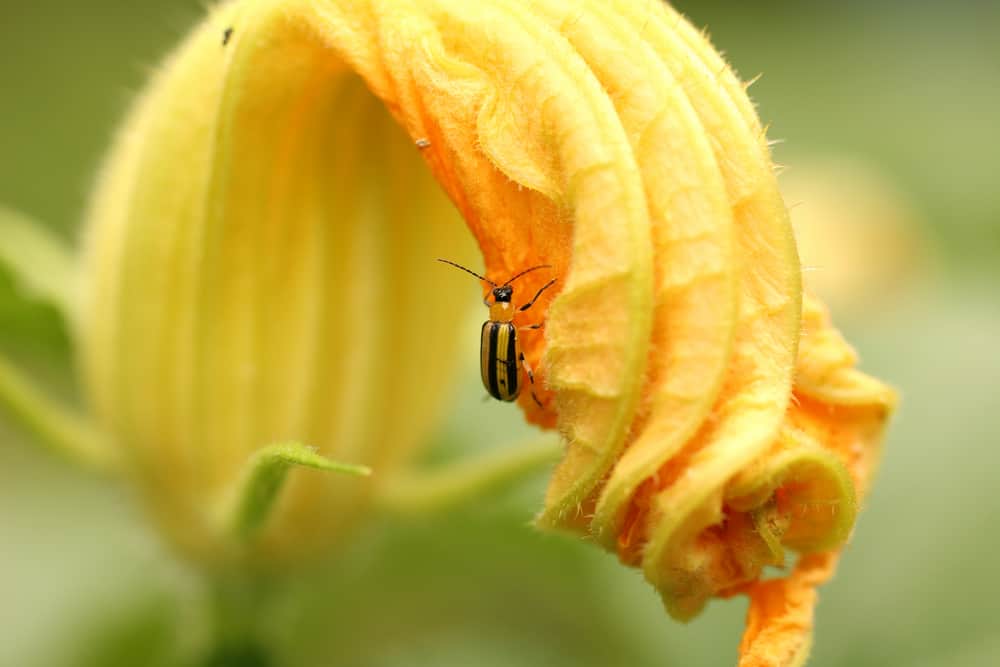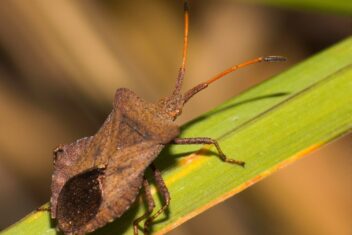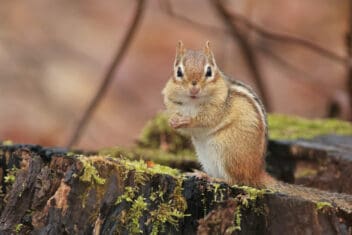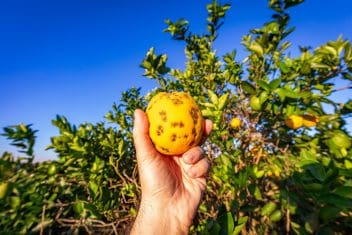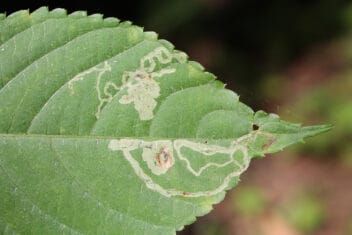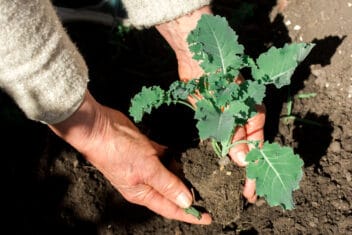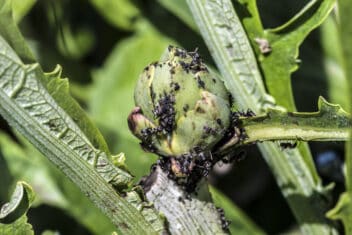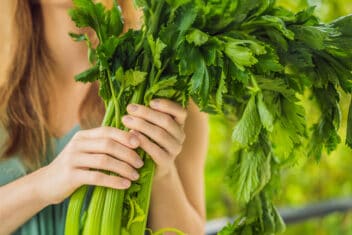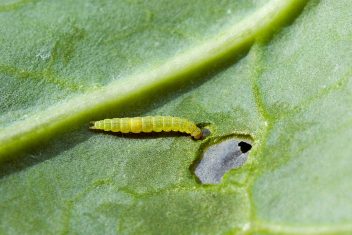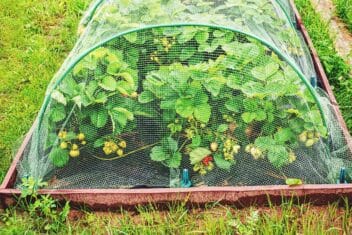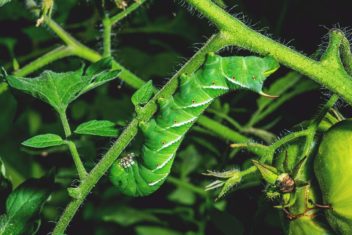Pumpkins are spectacular fruits, aren’t they? They come in so many shapes, sizes, and hues, and are as fun to cultivate as they are delicious. Of course, growing them can be a bit frustrating at times since a wide range of pumpkin pests can afflict them.
Below are most of the issues you may encounter while growing pumpkins. Please don’t let the length of this list dissuade you: it’s simply better to prepare for what might occur than to be caught off guard when and if it happens.
Pumpkin pests are annoying to deal with, but won’t usually ruin your harvest. Most of the bugs you’ll come across are standard across all Cucurbitaceae species, so if you also grow cucumbers or zucchini, check them for these issues too.
1. Squash Bugs
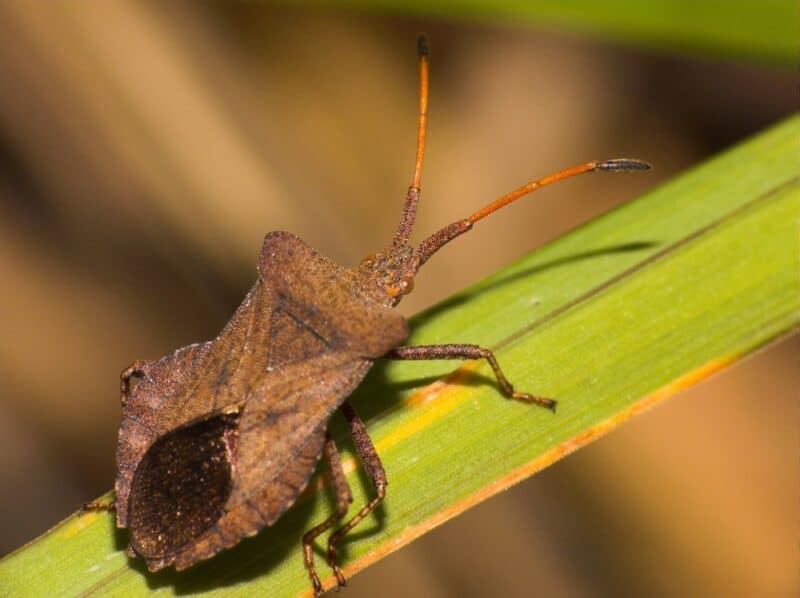

These flat, brown bugs suck the sap out of pumpkin plants, resulting in decay and possible death. Insecticides don’t work on the adults, so your best bet is prevention.
Clear all leaf detritus off the soil’s surface, and inspect leaves daily. If you find reddish eggs beneath them, scrape them off! Then feed them to your chickens or drown them in hot water with vinegar and dish soap.
If you go away for a few days and miss your opportunity to kill off the eggs or young larvae, you’ll have to deal with the adults. Wrap some double-sided tape around the stems to catch them as they crawl around, or pick them off and drop them into the aforementioned water solution.
2. Vine Borers
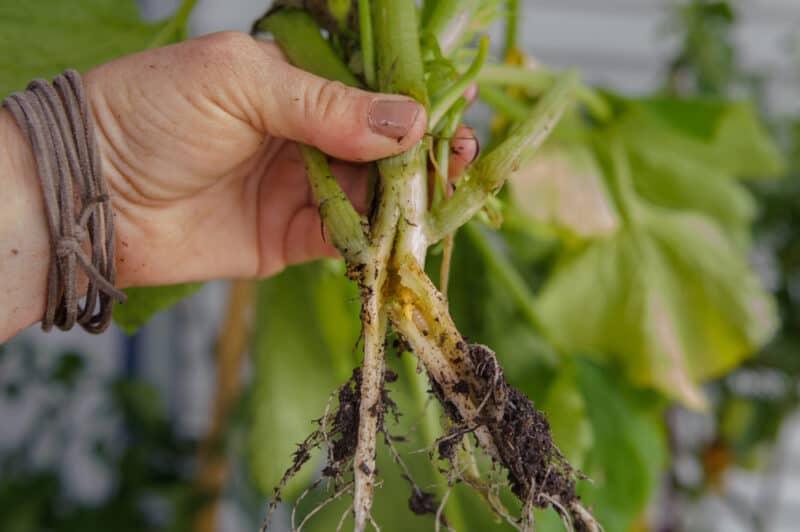

If you notice orange-black insects on your plants that look like wasps, you have vine borers.
These pumpkin pests (Melittia cucurbitae) are moths, and their larvae burrow (bore!) into squash and pumpkin stems to stuff themselves before they pupate. Your plants’ leaves will wilt, and the fruits will die since they can’t draw any nutrients through their stems.
Prevent them by tilling your soil deeply in autumn and springtime to reveal grubs for birds to eat.
Alternatively, since these insects are drawn to yellow hues, fill a yellow bowl with the aforementioned water/vinegar/soap mixture, add some yellow food coloring, and set it out in your garden. They’ll be attracted to the liquid and drown in it.
3. Aphids
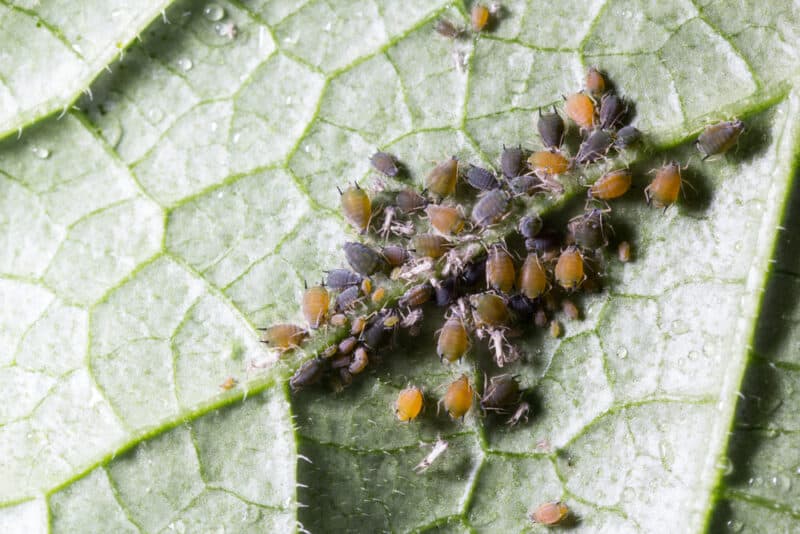

These little buggers are more of a nuisance than a serious problem, except for the fact that they’re virus carriers. Many viruses are carried by insects, which can fly over from a neighbor’s yard or catch a ride on a visitor.
I once lost an entire zucchini crop after a census taker decided to meander through my garden! Some aphids must have caught a ride on his pantaloons and hopped over to my zukes when they got the chance.
Neem oil is effective for removing them, as is insecticidal soap. Encourage ladybugs into your garden, or use diatomaceous earth around your plants to fend off the aphids. Just note that this powder will also kill ladybugs, so make it an either/or choice.
4. Armyworms
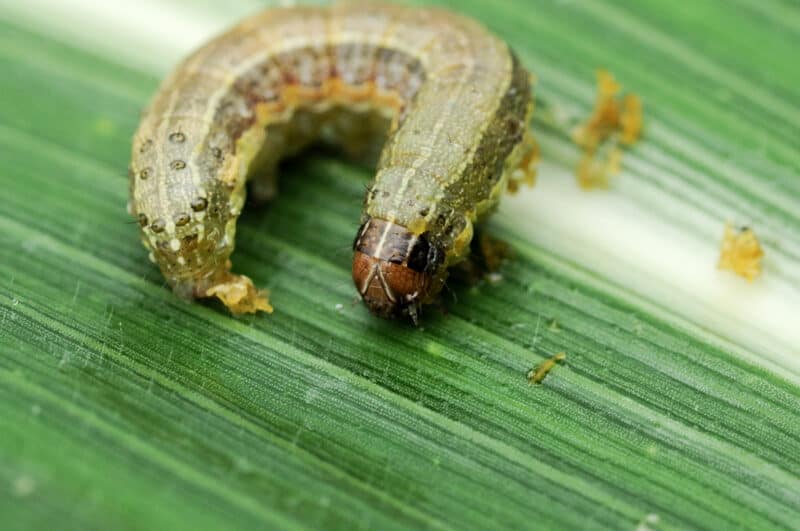

These caterpillars are the larvae of various moth species. They’re drawn to foliage, and a group of them can skeletonize your pumpkin patch within days.
The caterpillars may be green or yellowish, with brown or reddish stripes down their backs. If you see them, pick them off and drown them, or feed them to your poultry. Alternatively, you can treat the area with Bacillus thuringiensis spray to fend them off.
Note that these caterpillars are favored by parasitic braconid wasps. Try planting yarrow, dill, coriander, and tansy around the area to attract them. They’ll lay their eggs on the caterpillars, and their young will destroy and feed on the crawlers when they emerge.
5. Cucumber Beetles
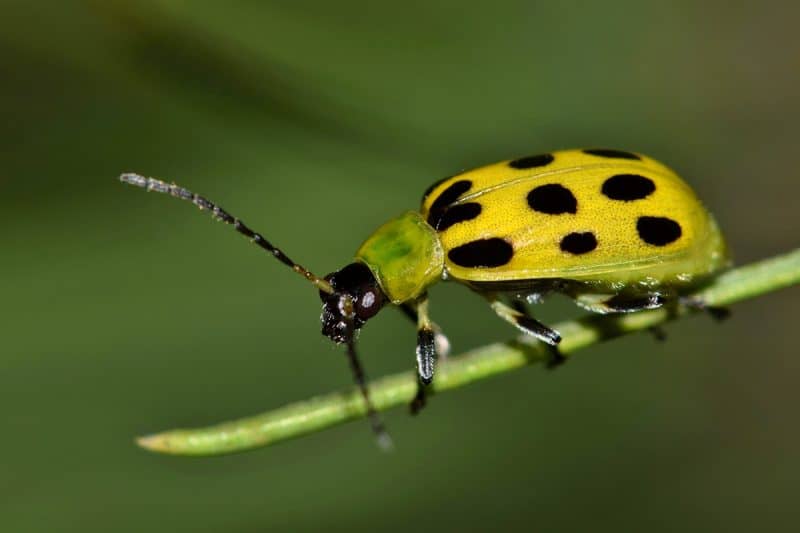

You might think these striped or spotted beetles are beneficial ladybug cousins, but they aren’t. They’re greedy jerkfaces that can—and will—wreak havoc on your plants from stem to stern.
While pesticides can be effective against them, try to prevent them before they become an issue.
Till your garden in the autumn, and rotate your crops annually. This way, if last year’s generation wakes up hoping for tasty pumpkin snacks, they’ll be confused and disappointed to find carrots or kale growing there instead.
These beetles hate radishes and nasturtiums, so you can also interplant these amongst your pumpkins to keep them at bay.
6. Thrips
Although thrips aren’t generally known as pumpkin pests, they can certainly become an issue if the chance arises. In fact, they often jump from alliums or cereal crops to pumpkins if they’re planted too closely together.
Avoid planting onions, garlic, and various grains within 10 feet of your pumpkins. If thrips do show up, you can put down reflective mulch panels or use an organic insecticide.
7. Cutworms
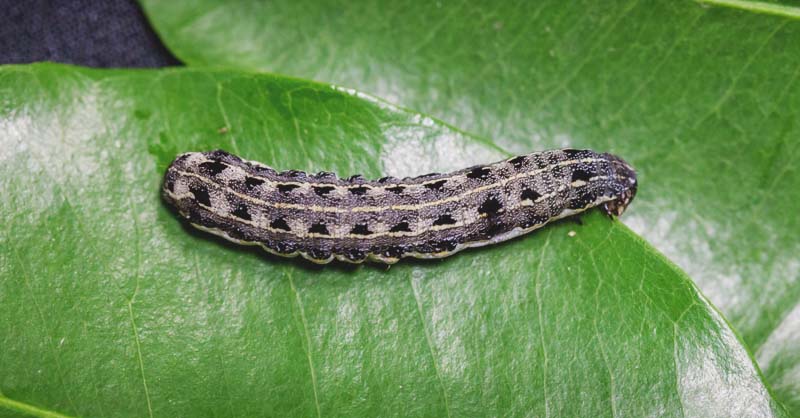
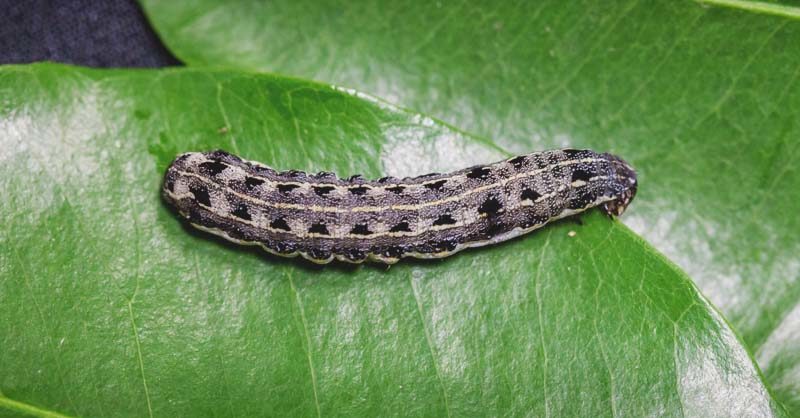
These jerks crawl along the soil’s surface and munch their way through your plants’ stems. They like to hide in detritus and wood piles and feed in the early morning and late evening.
We’ve found that the best way to fend them off is to wrap cardboard cuff sleeves around our plants’ stem bases, pushed about 1/2″ into the soil. This is a great way to re-use cardboard toilet paper rolls!
If you don’t want to go that route, scatter diatomaceous earth on the soil’s surface, or visit your garden regularly and pick them off by hand. Drown them or feed them to ducks, geese, chickens, or Guinea fowl if you have them.
Additionally, consider planting sunflowers or sunchokes nearby: they’re cutworms’ favorite food, and they’ll beeline for them instead of your pumpkins.
8. Loopers
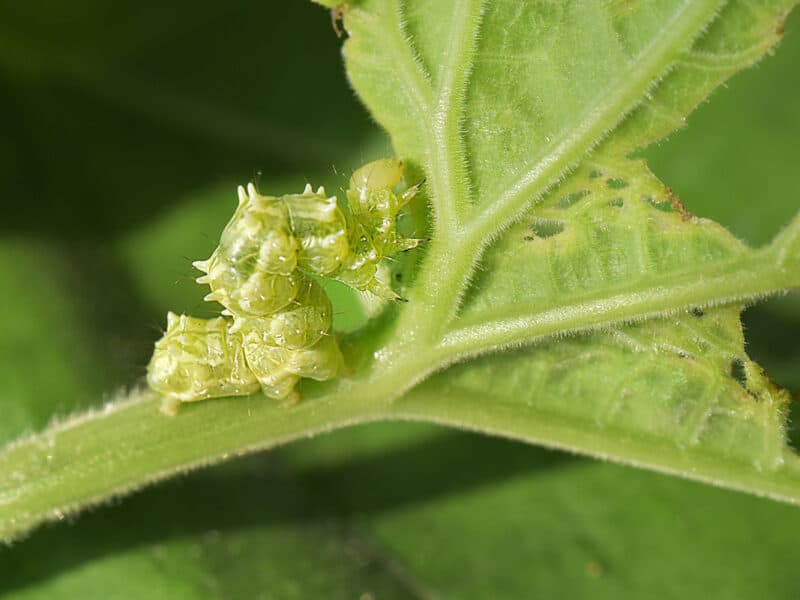

Loopers aren’t typically known as pumpkin pests, since they gravitate towards brassicas such as cabbage, kale, etc. That said, they’ll happily crawl over to feast on cucurbit foliage if it’s within easy reach.
Like the other caterpillars on this list, they can be picked off and drowned or use as chicken snacks. Alternatively, you can deter them with alliums such as garlic and onions, or make a homemade insecticidal spray with water, mint castile soap, minced or pureed garlic, and cayenne pepper.
9. Slugs and Snails
Slugs and snails are hardly the biggest problem you’ll face. They can cause serious damage to young plants, but older plants can handle a little chomping. Our guide can help you figure out how to deal with them.
Animal Interlopers
If you’d like to cultivate pumpkins successfully, your best bet is to grow them within a fenced enclosure. This should keep most animals from devouring them, but critters can be remarkably innovative.
10. Squirrels
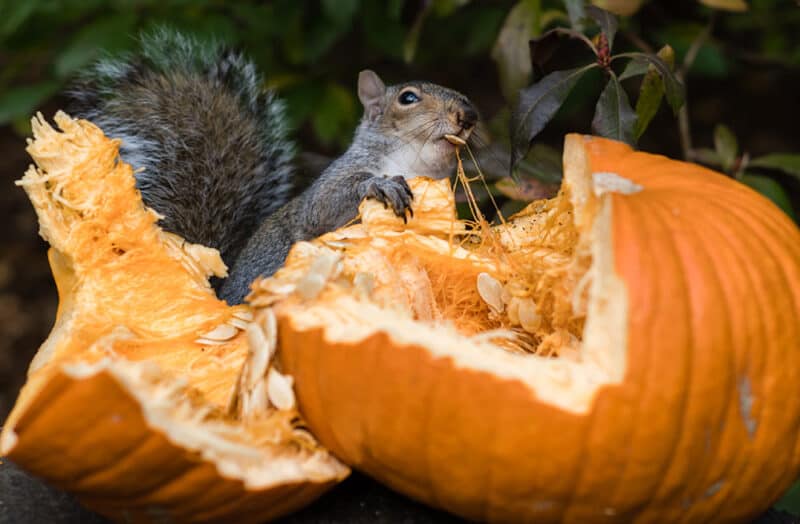

These sweet little critters are immensely fond of pumpkins and can do more damage than you can imagine if left unchecked. They’ll rip baby pumpkins off the vine and run off with them or chew through maturing rinds to get at the sweet flesh and tasty seeds.
The good news is that squirrels don’t like spicy flavors. Get yourself a bottle of Big Daddy’s Ass Burn hot sauce, and pour about a half cup of that into a spray bottle with one cup of water and one tablespoon dish soap.
Shake it up, wear gloves and eye protection, and spray your pumpkins with this mixture. Reapply after rainfall.
Alternatively, you can offer them a food source they’d prefer for your pumpkins. Hang a squirrel feeder about 40 feet away and keep it well stocked, and you should do fine. Alternatively, plant nut and fruit trees on the opposite end of your property.
12. Groundhogs
Also known as prairie dogs, these adorable mammals aren’t just pumpkin pests: they’ll feast on whatever’s available in your garden. If you choose to enclose your pumpkin patch, be sure to sink the fence at least a foot deep with the wire turned outwards to thwart animals from digging in beneath it.
Note that these guys don’t like strong, pungent scents.
If you notice significant groundhog activity around your garden, sprinkle chopped garlic and cayenne pepper around the perimeter. You can even hose your plants down with the hot sauce spray mentioned above.
12. Rabbits
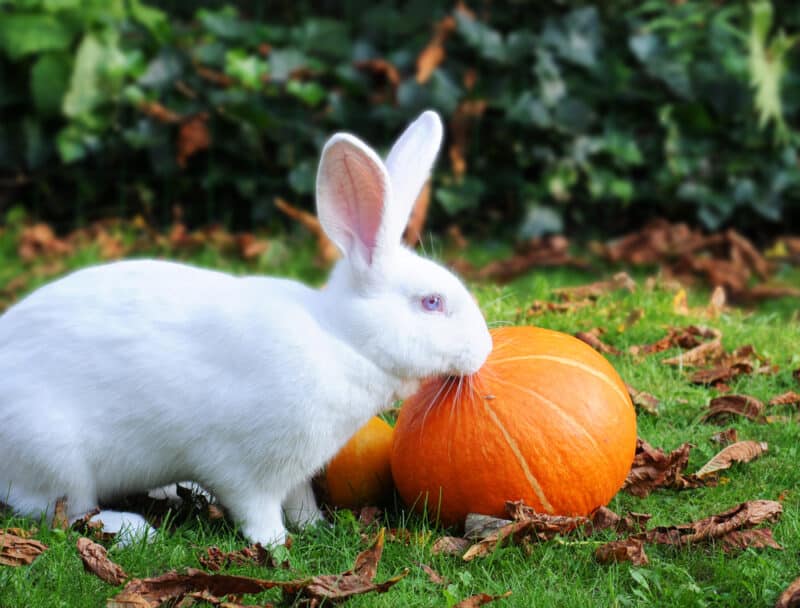

I love rabbits. My domestic rabbit is my sweetest companion in the world, but I also know that he would completely obliterate my garden if left to it. If you have wild rabbits around, rest assured that they’ll consider your garden a buffet unless you fend them off.
Like groundhogs, they can be deterred by a high fence that’s also sunk into the ground. Scatter predator urine or feces around the area, and plant plenty of alliums around to keep them at bay.
If they’re really insidious, auditory repellents can drive them away quite effectively. These high-pitched frequency machines will also repel mice, rats, skunks, and other animals that can hear that frequency.
Just note that if you have pet rodents, lagomorphs, etc., this frequency will also hurt or even kill them if they can’t get away from it.
13. Mice
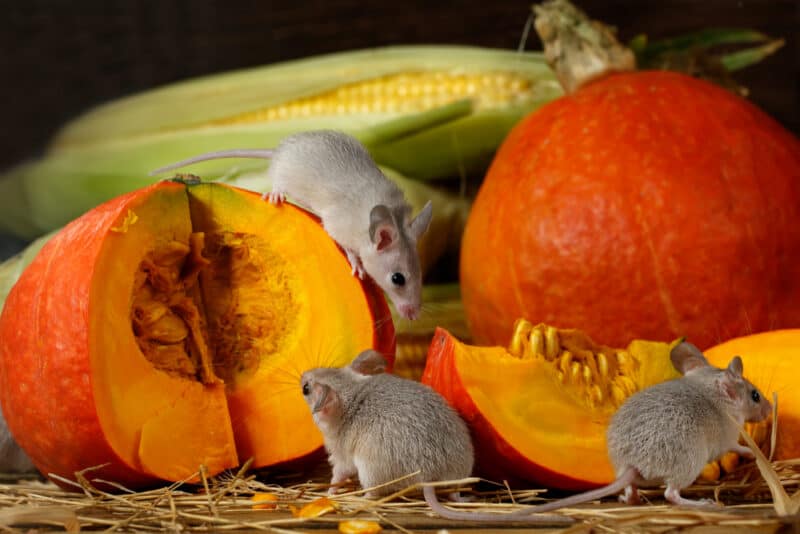

Wild mice tend to prefer immature pumpkins that they can gnaw into easily. As a result, you can protect baby punkins by enclosing them within a protective barrier when they’re still small. We use large plastic strawberry containers for this purpose.
Melt or cut a divot in one side so you won’t crush the stem when you close the container around your baby pumpkin.
This container should protect it from a great deal of animal and insect activity, while still allowing airflow through so the fruit doesn’t rot. Remove it when the fruit starts to push it open from the inside.
Alternatively, mice (as well as other small rodents, lagomorphs, and large herbivorous pumpkin pests) are nervous about potential predators. Scatter used cat litter around the area and they’ll keep away.
14. Deer
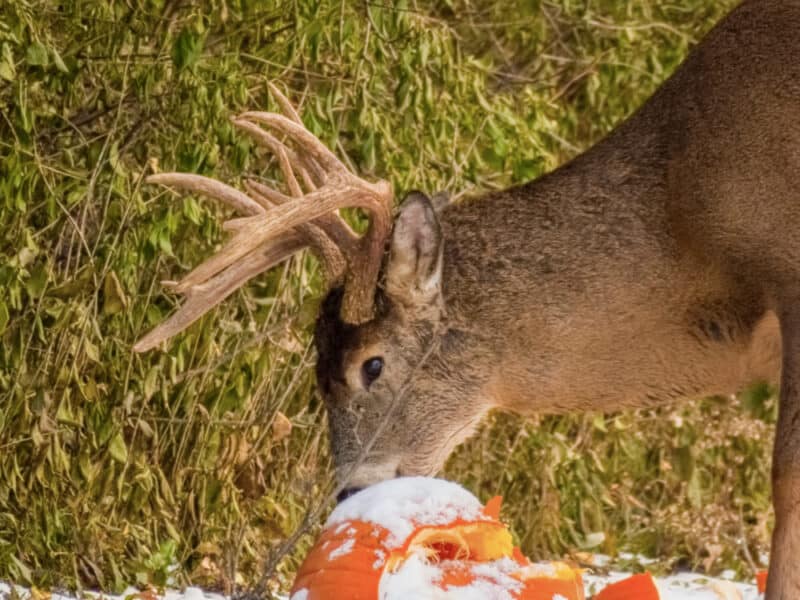

Not only will deer devour every part of your pumpkin from leaf to seed, they’ll also trample the entire patch in the process as they look for the tastiest morsel to sink their teeth into.
This often involves them breaking the pumpkins open with their hooves until they Goldilocks their way to the one that’s juuuuuust right.
Like other herbivores, they can be scared off with predator scents. We’re lucky enough to have a wildlife reserve nearby, and can get coyote, wolf, and bobcat feces to scatter around our property. If you go this route, wear a mask and remember where you’ve scattered it. Trust me on this.
15. Moose
See deer above, only larger. Much larger.
16. Opossums
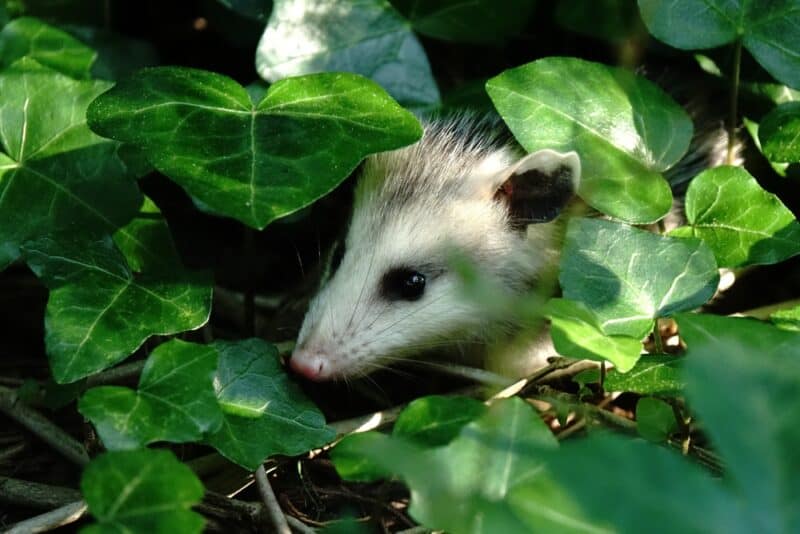

Opossums are opportunistic pumpkin pests, as they’ll mostly eat the detritus that others have left behind. That said, they may help themselves to new, baby pumpkins and thus destroy them before they can mature.
We don’t want to hurt or banish opossums since they’re amazing for controlling the tick population (and they’re lovely animals in general), so just try to fend them off your pumpkins with hot sauce spray.
Fencing won’t work for these guys unless it’s also enclosed from above: they’re great climbers and can scale most fences with ease.
17. Raccoons
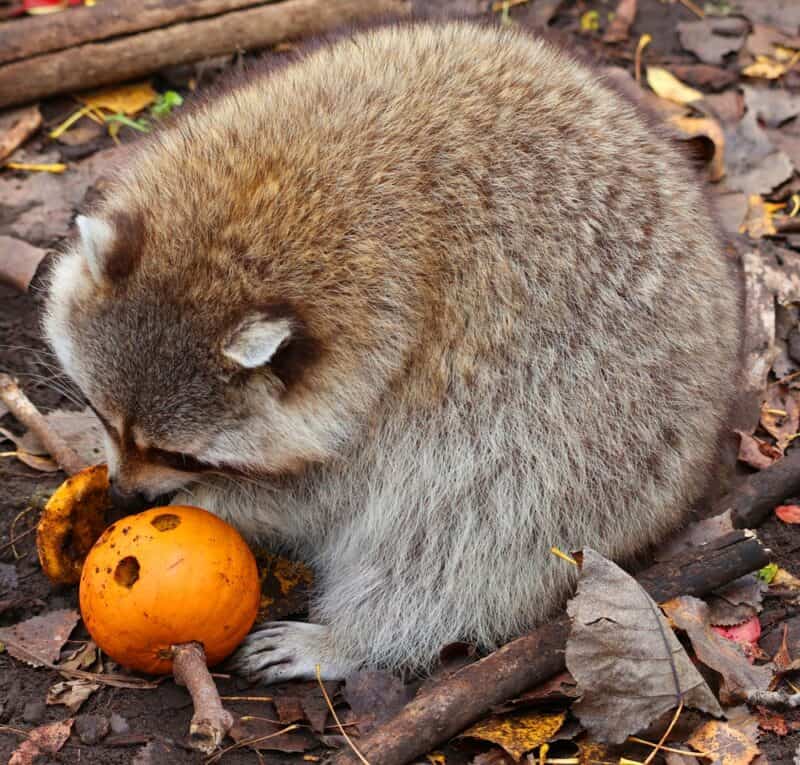

Speaking of climbers, raccoons are on par with opossums and squirrels when it comes to clambering over our pithy attempts to keep them at bay.
They’ll taste everything that’s on the menu, and will leave pumpkin carnage in their wake. Predator feces helps to deter them, as will a fence that arches sharply outward at the top.
Since their sense of smell is so strong, you can also encourage them away by sprinkling garlic, curry powder, and cayenne pepper around your plants. Then use leftover spices to make a spectacular curried pumpkin soup once your fruits ripen.
18. Porcupines
Have you ever watched a video of a porcupine eating a pumpkin? They absolutely love them. In fact, they make the most adorable noises while they eat, you might not even mind them devouring your crops.
Of course, if you have to keep your pumpkins away from these cuties, your best bet is to put up some sturdy fencing. They’re not easily deterred by predator scents (because quills), and they might actually enjoy the hot sauce spray.
19. Goats
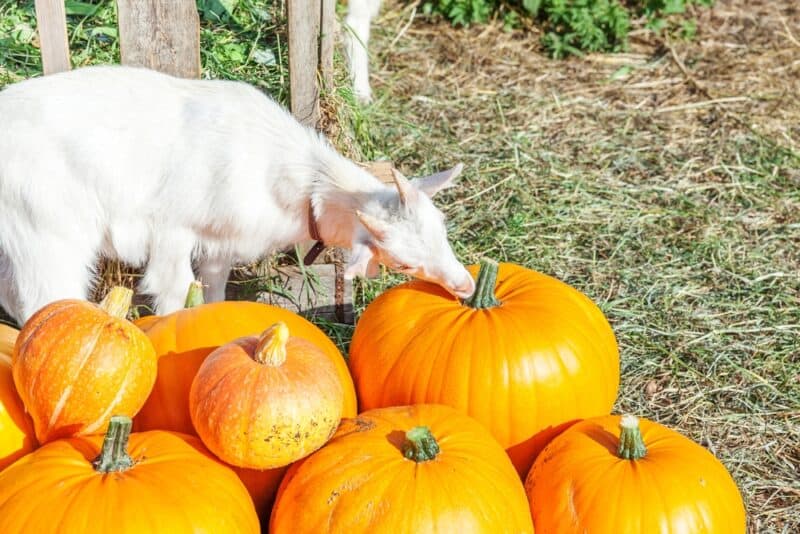

If you raise goats, keep them well away from your pumpkin patch. While you might never think of goats as being pumpkin pests exactly, they certainly appreciate pumpkin snacks whenever possible. They’ll break them open the same way deer do and gobble their way through it. Keep them away with sturdy, high fencing and predator dookie.
20. Sheep
See goats mentioned above, only with slightly less craziness.
21. Foxes
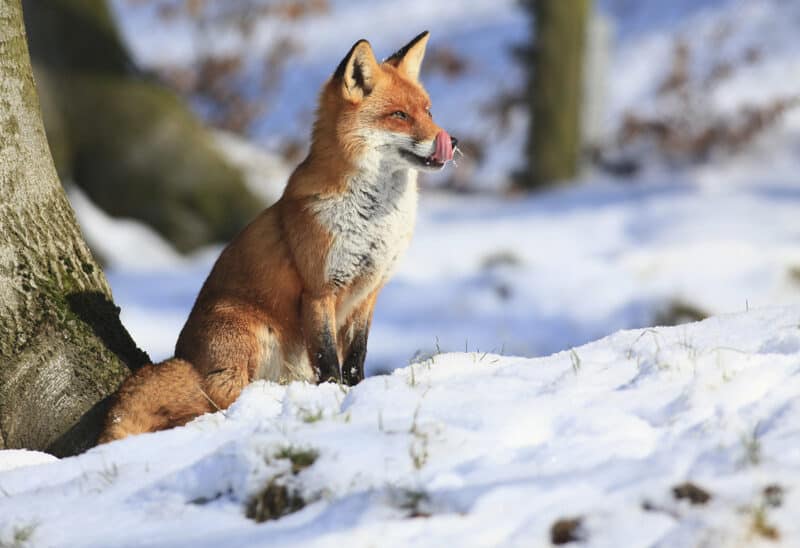

I have to admit, when I started to look into various pumpkin pests, I did not expect to find foxes on the list. Of course, they are canids, and every dog I’ve had has loved to eat pumpkin, so I suppose that makes sense.
Fences will keep these mischievous thieves away, especially if you sink the fencing at least a foot deep. Wolf and coyote poop will also work, as foxes are intimidated by their larger canid cousins. If you have dogs protecting your property, they can also help to chase off foxes as needed.
22. Bears
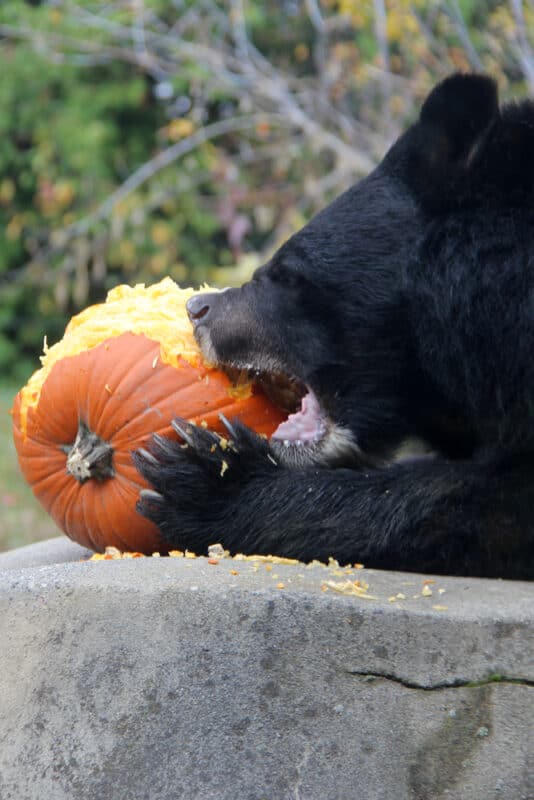

If you live in bear country, you might end up with them stealing a few of your pumpkins.
These guys get a pass when it comes to pumpkin pests because: bears. They can tear right through fencing, likely don’t care about spicy flavors, and tend to be the apex predators in most areas.
Black bears are easier to shoo away, but if y’all see a grizzly or Kodiak chomping on your prized Blue Doll heirloom pumpkin, let him enjoy it.
From a safe distance.
23. Birds
Several bird species love pumpkin flesh and also eagerly eat the delicious seeds held within them. Since it’s difficult for little songbirds to break through the rinds, they usually wait for larger species to crack through them and then take their turn.
Ravens and crows use their strong beaks to break through pumpkin shells, and species ranging from jays and cardinals to sparrows obliterate the insides.
Since birds don’t taste or process spices the way mammals do, the hot sauce spray won’t be effective against them. Netting will keep them away.
Domestic chickens and wild turkeys will also eat your pumpkins if the opportunity presents itself. Fence them out, if possible.
